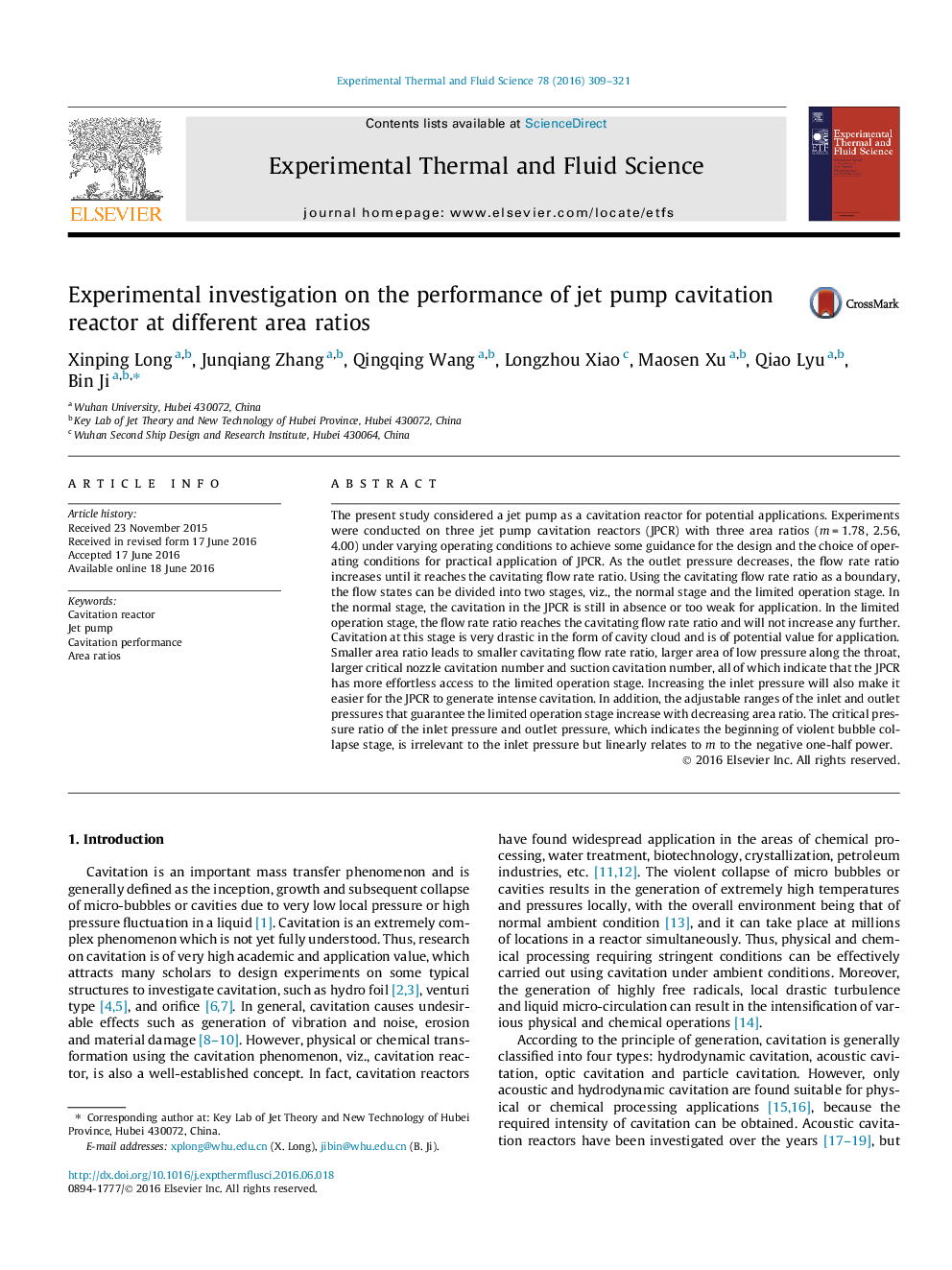| Article ID | Journal | Published Year | Pages | File Type |
|---|---|---|---|---|
| 651018 | Experimental Thermal and Fluid Science | 2016 | 13 Pages |
Abstract
The present study considered a jet pump as a cavitation reactor for potential applications. Experiments were conducted on three jet pump cavitation reactors (JPCR) with three area ratios (m = 1.78, 2.56, 4.00) under varying operating conditions to achieve some guidance for the design and the choice of operating conditions for practical application of JPCR. As the outlet pressure decreases, the flow rate ratio increases until it reaches the cavitating flow rate ratio. Using the cavitating flow rate ratio as a boundary, the flow states can be divided into two stages, viz., the normal stage and the limited operation stage. In the normal stage, the cavitation in the JPCR is still in absence or too weak for application. In the limited operation stage, the flow rate ratio reaches the cavitating flow rate ratio and will not increase any further. Cavitation at this stage is very drastic in the form of cavity cloud and is of potential value for application. Smaller area ratio leads to smaller cavitating flow rate ratio, larger area of low pressure along the throat, larger critical nozzle cavitation number and suction cavitation number, all of which indicate that the JPCR has more effortless access to the limited operation stage. Increasing the inlet pressure will also make it easier for the JPCR to generate intense cavitation. In addition, the adjustable ranges of the inlet and outlet pressures that guarantee the limited operation stage increase with decreasing area ratio. The critical pressure ratio of the inlet pressure and outlet pressure, which indicates the beginning of violent bubble collapse stage, is irrelevant to the inlet pressure but linearly relates to m to the negative one-half power.
Keywords
Related Topics
Physical Sciences and Engineering
Chemical Engineering
Fluid Flow and Transfer Processes
Authors
Xinping Long, Junqiang Zhang, Qingqing Wang, Longzhou Xiao, Maosen Xu, Qiao Lyu, Bin Ji,
